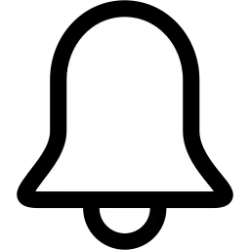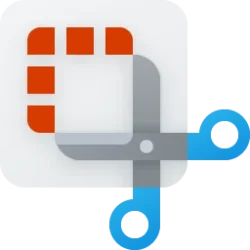- Local time
- 9:12 AM
- Posts
- 2,195
- OS
- WIN 11, WIN 10, WIN 8.1, WIN 7 U, WIN 7 PRO, WIN 7 HOME (32 Bit), LINUX MINT
I'm currently running RAID 10 on an LSI/BROADCOM/AVAGO card. My system board is an ASUS X99E-WS USB 3.1 monstrosity of a board, but that's okay because I like it. I've been thinking about getting another RAID card to expand my ports. Yes, I'm running out of port space for SATA and I would like just a little more. An additional 8 ports via breakout cables would suffice. Combing through the offers on Amazon I noticed that many of these LSI cards are being presented as unRAID and configured as IT mode instead of good ole fashioned RAID. I'm not so closed minded as to not be willing to give new things a try, but I do recall having to re-flash my original LSI card on the aforementioned system board on an older DELL (as it used PCIe gen 2) in order to convert it back into a genuine RAID card. I don't ever want to have to do that again.
So here's the rub: Can I run the unRAID card alongside my RAID card on the same system board without conflicts and other grievances of that nature? And: If I can will I be able to configure the unRAID card for the purposes of accessing other drives independantly, via Windows Disc Manager, without putting them in a RAID array? And: Will this affect my currently existing Network Attached Storage which is running just fine? Will I have to pay munny to someone simply because I have an unRAID card installed but have no intentions of using it as a NAS? And: Will there be a problem with this if I happen to be using another part of my system board to facilitate a server? I have so many questions!
I have so many questions! 
Any input on this from someone who is experienced with such things would be greatly appreciated. I've run standard port mutlipliers before and I don't like them. UnRAID seems to be the right solution in this case as I am currently happy with the RAID that I have but could use some extra SATA ports for what I'm planning to do in the future. Please don't send me links to technical sites as my old and addled brain will likely cave under duress in a futile effort to comprehend what I'm reading. Give it to me straight. Layman's language if need be. Thanks in advance.
*Editor's note* - I'm using Windows 11 and Windows 7 on the system being addressed in this thread.
So here's the rub: Can I run the unRAID card alongside my RAID card on the same system board without conflicts and other grievances of that nature? And: If I can will I be able to configure the unRAID card for the purposes of accessing other drives independantly, via Windows Disc Manager, without putting them in a RAID array? And: Will this affect my currently existing Network Attached Storage which is running just fine? Will I have to pay munny to someone simply because I have an unRAID card installed but have no intentions of using it as a NAS? And: Will there be a problem with this if I happen to be using another part of my system board to facilitate a server?

Any input on this from someone who is experienced with such things would be greatly appreciated. I've run standard port mutlipliers before and I don't like them. UnRAID seems to be the right solution in this case as I am currently happy with the RAID that I have but could use some extra SATA ports for what I'm planning to do in the future. Please don't send me links to technical sites as my old and addled brain will likely cave under duress in a futile effort to comprehend what I'm reading. Give it to me straight. Layman's language if need be. Thanks in advance.
*Editor's note* - I'm using Windows 11 and Windows 7 on the system being addressed in this thread.
Last edited:
My Computer
System One
-
- OS
- WIN 11, WIN 10, WIN 8.1, WIN 7 U, WIN 7 PRO, WIN 7 HOME (32 Bit), LINUX MINT
- Computer type
- PC/Desktop
- Manufacturer/Model
- DIY, ASUS, and DELL
- CPU
- Intel i7 6900K and i9-7960X / AMD 3800X (8 core)
- Motherboard
- ASUS X99E-WS USB 3.1 and ASUS X299 SAGE
- Memory
- 128 GB CORSAIR DOMINATOR PLATINUM (B DIE)
- Graphics Card(s)
- NVIDIA 1070 and RTX 3070
- Sound Card
- Crystal Sound (onboard)
- Monitor(s) Displays
- single Samsung 30" 4K and 8" aux monitor
- Screen Resolution
- 4K and something equally attrocious. I'll be working on this.
- Hard Drives
- A, B, C, D, E, F, G, H, I, J, K, L, M, N, O, P, Q, R, S, T, U, V, W
Ports X, Y, and Z are reserved for USB access and removable drives.
Drive types consist of the following: Various mechanical hard drives bearing the brand names, Seagate, Toshiba, and Western Digital. Various NVMe drives bearing the brand names Kingston, Intel, Silicon Power, Crucial, Western Digital, and Team Group. Various SATA SSDs bearing various different brand names.
RAID arrays included:
LSI RAID 10 (WD Velociraptors) 1115.72 GB
LSI RAID 10 (WD SSDS) 463.80 GB
INTEL RAID 0 (KINGSTON HYPER X) System 447.14 GB
INTEL RAID 1 TOSHIBA ENTERPRIZE class Data 2794.52 GB
INTEL RAID 1 SEAGATE HYBRID 931.51 GB
- PSU
- SEVERAL. I prefer my Corsair Platinum HX1000i but I also like EVGA power supplies
- Case
- ThermalTake Level 10 GT (among others)
- Cooling
- Noctua is my favorite and I use it in my main. I also own various other coolers.
- Keyboard
- all kinds.
- Mouse
- all kinds
- Internet Speed
- 360 mbps - 1 gbps (depending)
- Browser
- FIREFOX
- Antivirus
- KASPERSKY (no apologies)
- Other Info
- Gave Dell touch screen with Windows 11 to daughter and got me an OTVOC. Being a PC builder I own many desktop PCs as well. I am a father of five providing PCs, laptops, and tablets for all my family, most of which I have modified, rebuilt, or simply built from scratch. I do not own a cell phone, never have, never will.






